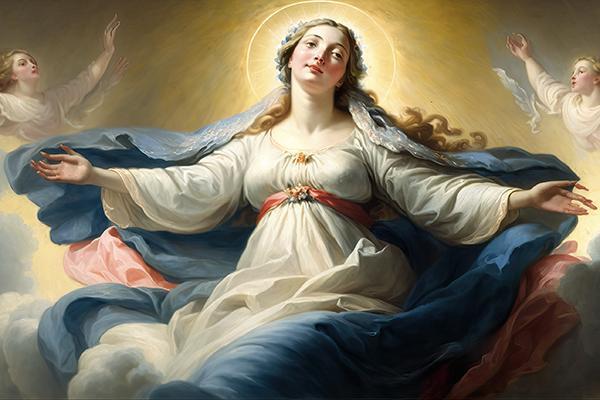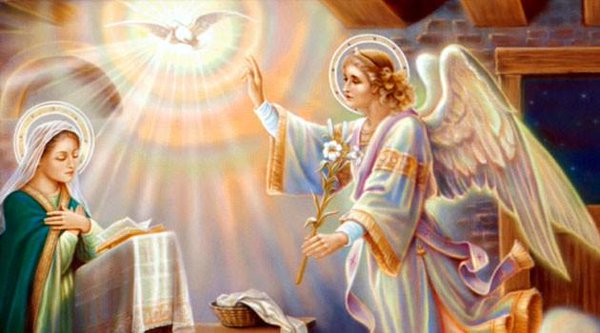THE PERPETUAL VIRGINITY OF MARY

POPE JOHN PAUL II GENERAL AUDIENCE
Wednesday, August 28, 1996
Mary ever virgin (Reading: Chapter 2 of the Gospel of Luke, verses 4-7)
1. The Church has constantly manifested her faith in Mary's perpetual virginity. The most ancient texts, when they refer to the conception of Jesus, call Mary simply Virgin, but implying that they considered this quality as a permanent fact, referring to her whole life.
The Christians of the first centuries expressed that conviction of faith by means of the Greek term άεί-πάρθενς "ever virgin," created to qualify in a unique and effective way the person of Mary, and to express in a single word the faith of the Church in her perpetual virginity. We find it already in the second symbol of faith of St. Epiphanius, in the year 374, in relation to the Incarnation: the Son of God "became incarnate, that is, was begotten in a perfect way by holy Mary, the ever-virgin, by the work of the Holy Spirit" (Ancoratus, 119, 5: DS 44).
The expression ever-virgin was taken up by the Second Council of Constantinople, which affirmed: the Word of God "was incarnate of the holy glorious Mother of God and ever-Virgin Mary, and was born of her" (DS 422). This doctrine was confirmed by two other ecumenical councils, the fourth Lateran, 1215 (DS 801), and the second of Lyon, 1274 (DS 852), and by the text of the definition of the dogma of the Assumption, 1950 (DS 3.903), in which the perpetual virginity of Mary is adduced among the reasons for her elevation in body and soul to heavenly glory.
2. Using a synthetic formula, the tradition of the Church has presented Mary as "virgin before childbirth, during childbirth and after childbirth," affirming, by mentioning these three moments, that she never ceased to be a virgin.
Of the three, the affirmation of virginity before childbirth is undoubtedly the most important, since it refers to the conception of Jesus and touches directly on the very mystery of the Incarnation. This truth has been present from the beginning and in a constant form in the faith of the Church. Virginity during childbirth and after childbirth, although implicitly contained in the title of virgin attributed to Mary already in the origins of the Church, becomes the object of doctrinal deepening when some begin explicitly to question it.
Pope Hormisdas specifies that "the Son of God became the Son of man and was born in time as a man, opening his mother's womb at birth (cf. Lk 2:23) and, by the power of God, without breaking his mother's virginity" (DS 368). This doctrine was confirmed by the Second Vatican Council, which affirmed that Mary's firstborn Son "did not impair her virginal integrity, but sanctified it" (Lumen gentium, 57). With regard to virginity after childbirth, it must first of all be emphasized that there is no reason to think that the will to remain a virgin, manifested by Mary at the moment of the Annunciation (cf. Lk 1:34), has subsequently changed. Moreover, the immediate meaning of the words: "Woman, behold your son," "behold your mother" (Jn 19:26-27), which Jesus addresses from the cross to Mary and the beloved disciple, suggests a situation that excludes the presence of other children born of Mary.
Those who deny virginity after childbirth have thought to find a probative argument in the term "firstborn," which the Gospel attributes to Jesus (cf. Lk 2:7), as if this expression implied that Mary had begotten other children after Jesus. But the word "firstborn" literally means "son not preceded by another" and, in itself, does not take into account the existence of other sons. Moreover, the evangelist underlines this characteristic of the Child, because with the birth of the firstborn were linked some prescriptions of the Jewish law, independently of the fact that the mother had given birth to other children. To each only son, therefore, those prescriptions were applied because he was "the firstborn" (cf. Lk 2:23).
According to some, those Gospel texts that recall the existence of four "brothers of Jesus": James, Joseph, Simon and Judas (cf. Mt 13:55-56; Mk 6:3), and of several sisters, would be against Mary's virginity after childbirth.
It should be remembered that in both the Hebrew and Aramaic languages there is no particular term for the word cousin and that, consequently, the terms brother and sister had a very broad meaning, encompassing various degrees of kinship. In reality, the term brothers of Jesus indicates the children of a Mary who was a disciple of Christ (cf. Mt 27:56), who is significantly designated as "the other Mary" (Mt 28:1). These are close relatives of Jesus, according to a frequent expression in the Old Testament (cf. Catechism of the Catholic Church, n. 500), so that Mary Most Holy is the ever-Virgin. This prerogative of hers is a consequence of her divine maternity, which consecrated her totally to the redemptive mission of Christ.
Greetings
Dear Brothers and Sisters, I am pleased to greet with affection all the Spanish-speaking people participating in this Audience, especially the pilgrims from Mexico, Colombia and Spain. May the Blessed Virgin, who always knew how to be at the side of her Divine Son, accompany your journey through this life towards the encounter with Christ the Redeemer. Invoking her maternal protection, I gladly impart to you my Apostolic Blessing.


